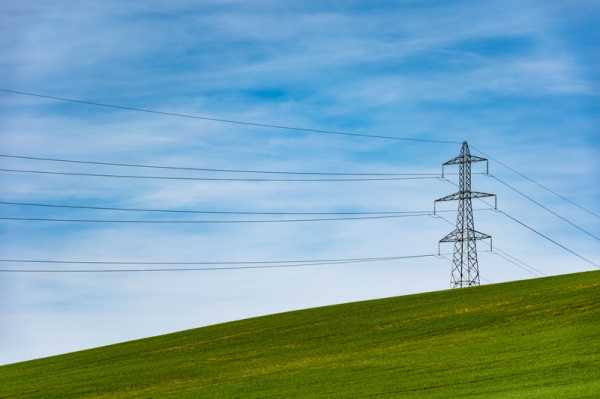
A less sexy, yet critical point for an up-to-date strategy is shifting gears to improve the electricity grid (Photo: Thomas Despeyroux)
At the end of October, the EU-US Task Force on Energy Security met for the 11th time. The European Commission called this dialogue an “essential tool to ensure energy security in Europe”.
But we all know how it goes. Tools get lost in dark garage corners; your neighbour borrows one to never return; they’re left outside to rust in the rain… Indeed, they are nothing without their well-organised, structured toolbox. And that’s what really missing here.
Triggered by the climate emergency, cost-of-living crisis, geopolitical turmoil and fierce competition for the clean tech pole positions, energy security has evolved drastically over the last couple of years. The EU’s energy security toolbox, however, remained roughly untouched and left the Union paralysed.
Concretely, the toolbox we are talking about is the outdated Energy Security Strategy.
This strategy, born in 2014, aimed to shield the EU’s energy market from “the context of a deteriorating security situation in Ukraine [after Russia’s annexation of Crimea] and widespread concerns about potential disruption of gas supplies”.
One of course identifies parallels to current challenges, but the 2014 contextualisation also gives away why it’s problematic today.
It relies on fossil fuels and focuses namely on the safeguarding of gas supplies. It fails to recognise the magnitude and urgency of the climate crisis and has — not surprisingly, after 10 years of speedy developments — countless technological blind spots. It is, for instance, not fit to answer the huge needs regarding electricity grids and doesn’t consider the potential of key new developments in the renewables sector.
Updating the EU’s Energy Strategy should be a priority for the next EU mandate. If done rightly, a revamped Energy Security Strategy can simultaneously strengthen the EU’s access to reliable and sustainable energy, enable the delivery of the EU’s climate commitments, strengthen solidarity between member states and improve the social and democratic dimension of the EU’s energy project.
But how do we get there?
First, the new strategy must be founded on zero-emission, reliable and resilient energy. This shift to clean energy and electrification comes with new energy security dynamics, opportunities, and vulnerabilities that all need to be addressed.
Core is to build on the strengths of wind, solar and other renewable energy sources, and to enable the deployment of these sources to massively expand. As important is to prioritise demand flexibility and energy storage. For both, experts’ input will be critical to provide state-of-the-art assessments of needs, resources and the technological playing field.
The Energy Security Strategy must boost the development of comprehensive studies on the presence and deployment of critical materials, such as copper and lithium, in Europe.
It, of course, needs to look outward and provide a blueprint for global critical materials partnerships — matching the efforts of China and the US.
However, the EU should distinguish itself through terms that initiate sincere climate action partnerships with emerging markets. Both intra-EU and externally, these efforts must be coupled with the deployment and guarding of sustainable mining safeguards in respect of environmental and social standards.
The grid
A less sexy, yet critical point for an up-to-date strategy is shifting gears to improve the electricity grid. European households and businesses desperately need a framework that eliminates bottlenecks.
As the current grid issues show, energy security is highly dynamic and complex. A new strategic approach must therefore introduce a plan to equip European and national public services to continuously gather, monitor, and assess data. This includes mapping out the effects of new climate policies, and corresponding needs in sectors such as transport and buildings.
Second, and absolutely crucial, EU energy security is not fulfilled until energy poverty is eliminated from its soils.
During the last years, it became painfully clear that free markets will not deliver an inclusive transition, nor energy security for all. Across Europe, striking examples illustrate the need to not leave the EU’s energy market solely in the hands of private players. In Poland, due to prices and fuel availability issues, many homes struggled to heat themselves last winter. In Spain, communities such as La Cañada del Real in Madrid suffered from full-on electricity fallout.
Sign up for EUobserver’s daily newsletter
All the stories we publish, sent at 7.30 AM.
By signing up, you agree to our Terms of Use and Privacy Policy.
The strategy must deliver guidance on short- versus long-term policies targeting the energy security of households. It should provide opportunities for citizens to take ownership of their energy transition and energy security, while also catering for the less active who are interested in off-the-shelf solutions.
A true just transition approach to energy security cannot be fulfilled by solely focusing on the supply-side and thus energy generation. It needs to shed light on demand-reduction as well, both through efficiency and sufficiency.
Seriously investing in retrofitting homes is thereby the fastest way out of energy poverty for citizens. It improves quality of life; lowers the bills and enables the energy security approach to be a social project.
Finally, revising the strategy is an opportunity to centre the engagement of the public on numbers, timeframes, and implementation of targets, and thus to include people in the transition. This strengthens well-informed policy processes and eliminates blind spots, but also bolsters democratic decision-making, critical to avoiding public backlash to climate and energy policy.
It’s high time to recognise the importance of the EU’s Energy Security Strategy. Bringing order into this toolbox, thereby making it fit to deal with a changed world, is fundamental if we want to ensure sufficient reliable and sustainable energy for all.
Source: euobserver.com



